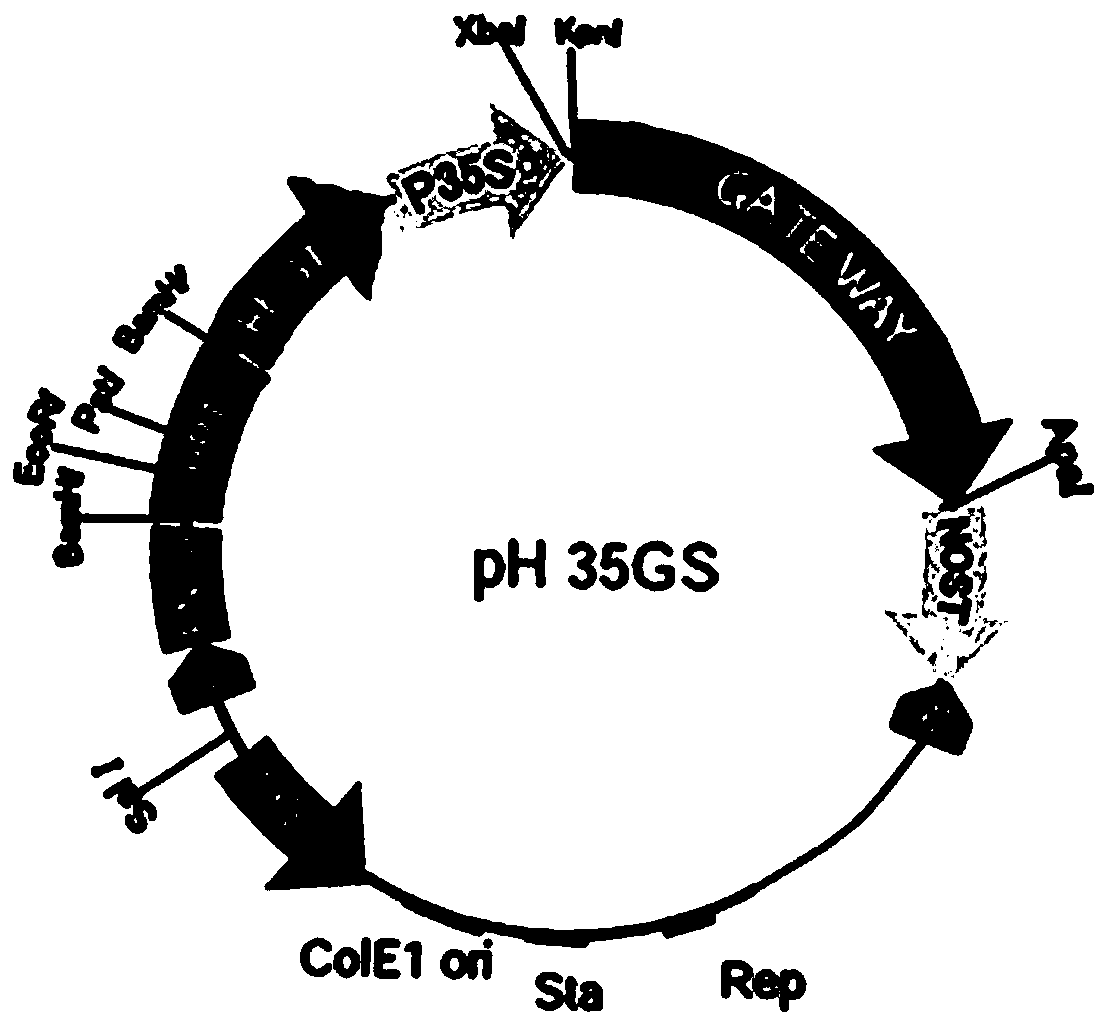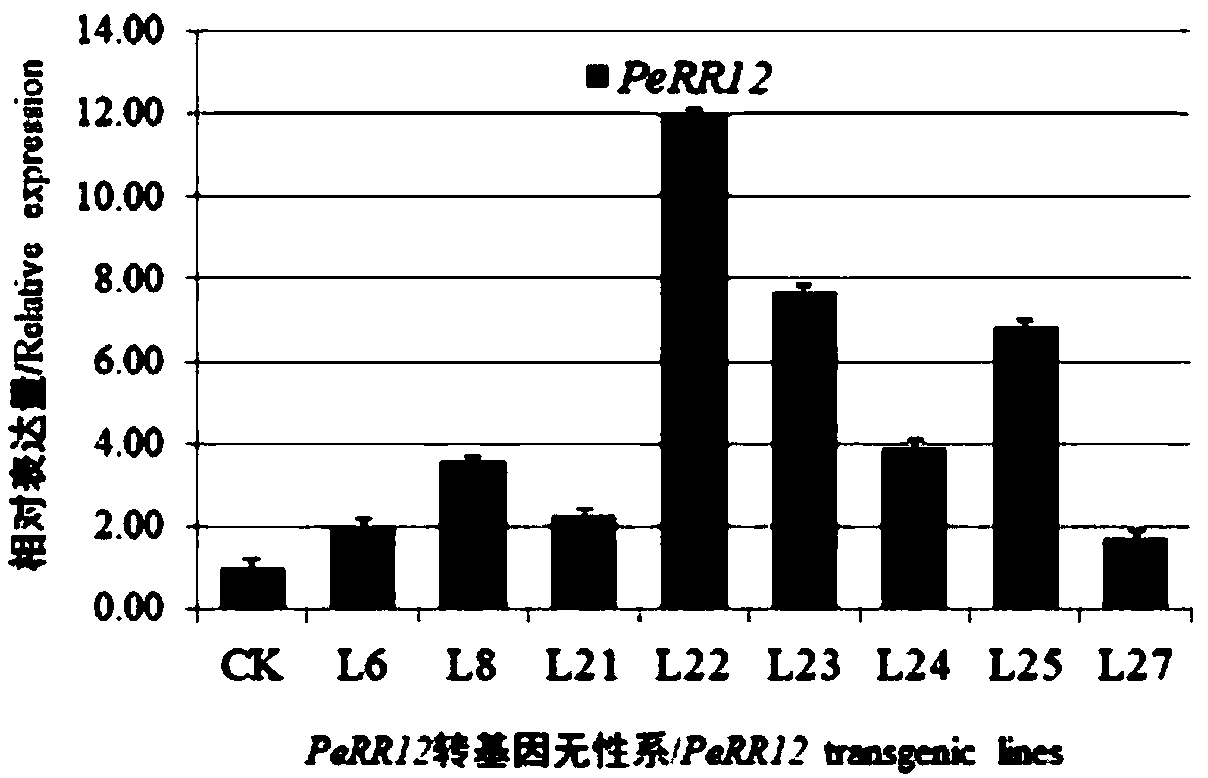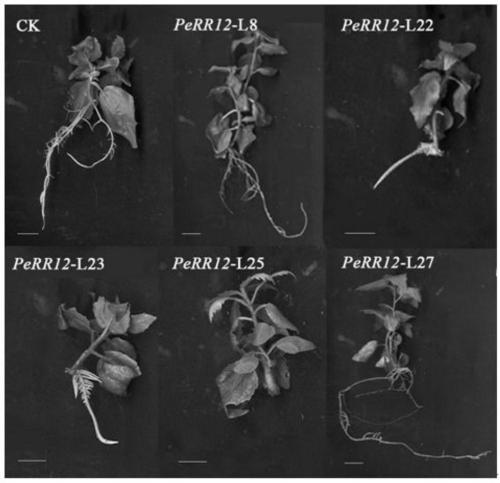Key gene PeRR12 for regulating adventitious root formation and stem development of poplars as well as expression protein and application of key gene PeRR12
A key gene, poplar technology, applied in the fields of application, genetic engineering, plant genetic improvement, etc., can solve the problems of few targeted, systematic and in-depth research reports, etc., to reduce the number of adventitious roots, increase plant height, and rooting rate rising effect
- Summary
- Abstract
- Description
- Claims
- Application Information
AI Technical Summary
Problems solved by technology
Method used
Image
Examples
Embodiment 1
[0027] Example 1 Cloning of the PeRR12 gene by RACE technology
[0028] Based on the results of the applicant's previous research on the expression profile chip of poplar adventitious roots, Oligo 6 was used to design the RACE primers at the 3' end and perform 3' RACE to obtain the 3' cDNA end fragment, which was cloned into a T-vector, and the insert fragment was screened by PCR. Sequencing, Blast confirmed that the above fragments were homologous to genes related to other plants. In the same way, design the RACE primers at the 5' end according to the obtained correct 3' cDNA end fragment sequence, perform 5' RACE, obtain the 5' cDNA end fragment, clone it into T-vector, and perform PCR screening on the insert fragment. sequencing. The specific primers and main process are as follows:
[0029] PeRR12 3'Outer primer: 5'-CCGATCCTTGAACAATCCTCTC-3';
[0030] PeRR12 3'Inner inner: 5'-CAACCCTCAGATGCTTCATGTGAACCCA-3';
[0031] PeRR12 5'Outer primer: 5'-CCCATCTTTTGACCTCACTAATG-3'...
Embodiment 2
[0052] Embodiment 2PeRR12 gene plant expression vector construction
[0053] The overexpression vector of PeRR12 gene was constructed by pathway cloning technology. Using specific PCR primers (PeRR12 ORF primers in Example 1), PCR amplification was performed using cDNA as a template, and the PeRR12 gene ORF was constructed into an entry vector. The entry vector is pCR TM 8 / GW / TOPO TM vector (Invitrogen). The reaction system is: Fresh PCR product (purified) 10-20ng; Salt solution 1μL; pCR TM 8 / GW / TOPO TM vector 1μL; add sterile ddH 2 O to make up 6 μL. The reaction procedure is: stand at room temperature for 30 min.
[0054] Pick positive clones from the screening culture plate for PCR detection and sequencing verification, the entry vector with PeRR12 gene and the plant expression vector pH35GS for LR reaction. Vector plasmid such as figure 1shown. The reaction system is: linearized dentry clone 100ng; purified destination vector (100ng / μL) 1.5μL; LR Clonase IIenzy...
Embodiment 3
[0055] The genetic transformation of embodiment 3PeRR12 gene
[0056] The constructed pH35GS-PeRR12 overexpression vector was transformed into Agrobacterium strain EHA105 (Invitrogen) by liquid nitrogen freeze-thaw method, and the PeRR12 gene was transformed into poplar through Agrobacterium-mediated. Experimental results such as Figure 2-6 As shown, among them, figure 2 For real-time quantitative molecular detection of overexpressed PeRR12 gene; image 3 Comparison of the overall morphology of the transgenic poplar with overexpression of PeRR12 gene and non-transgenic poplar (CK); Figure 4 is the rooting time and rooting rate of transgenic poplar and non-transgenic poplar (CK) overexpressing PeRR12 gene; Figure 5 It is the comparison of the number of adventitious roots and plant height of transgenic poplar overexpressing PeRR12 gene and non-transgenic poplar (CK); Figure 6 It is the phenotype analysis of PeRR12 transgenic lines under NAA treatment. From the results,...
PUM
 Login to View More
Login to View More Abstract
Description
Claims
Application Information
 Login to View More
Login to View More - R&D
- Intellectual Property
- Life Sciences
- Materials
- Tech Scout
- Unparalleled Data Quality
- Higher Quality Content
- 60% Fewer Hallucinations
Browse by: Latest US Patents, China's latest patents, Technical Efficacy Thesaurus, Application Domain, Technology Topic, Popular Technical Reports.
© 2025 PatSnap. All rights reserved.Legal|Privacy policy|Modern Slavery Act Transparency Statement|Sitemap|About US| Contact US: help@patsnap.com



